– I’m Rebecca Minter, I’m the Chair of the Department of Surgery and I am the newest Mini Med School Dean taking over, which isn’t possible, for Dr. Rick Page who sends his regards.
Rick is now a real Dean, so maybe that’s what Lauren and I will do next. Both the two prior Mini Med School Deans have gone on to be real med school deans, but he sends his regards and I’m very excited to be here this evening. So our topic this evening for all of you medical students, as I mentioned, is Personalized Medicine, and you all are so advanced that we’re going to skip over the standard medicine piece and jump straight to precision medicine, which will be tailored to the individual needs of your patients. And so with that, I am going to actually turn things over to my partner, Dr. Laurel Rice, and I will look forward to the discussion.
– Thank you, Rebecca. We have a fabulous program for you tonight. I can only say that what you’re going to get wind of tonight is really going to represent a lot about what the Wisconsin ideal is. We are a forward-looking organization that has a multipronged attack in terms of this ideal. Of course, you know, because most of you have been here before, that research is a tremendous focus for this conference. We are at the cutting edge of so very much, and you’re going to see that tonight. But also, one of our really most important charges is training the physician, leaders, scientists of the future. You are medical students tonight. We also have 160 medical students per year in our four-year program. Now I want to get going with the program. I have the distinct pleasure of introducing the Master of Ceremonies, Dr. Richard Moss, and let me start by saying he’s a Senior Associate Dean of Research, Biotechnology, and Graduate Studies here at the University of Wisconsin. He received his PhD in Vermont, did his post-doctoral work in Boston, because chairman of the Physiology Department here in 1988, and in 2009 became the Associate Dean. I can only tell you that Dean Moss has a finger in every pot, including leading the search committee for myself when I was recruited here at the University of Wisconsin, so he holds a special spot in my heart. Rick, come on up.
(audience applauding)
– Thank you, Laurel. Well, thank you very much, Laurel, and welcome to all of you. Obviously, in prep at Wisconsin I used to come out in the weather that we have, but after all it’s a lot warmer than two weeks ago.
So, this evening is really a very special evening, and I do have to say for myself that, as an Associate Dean who is focused on research, there are many, many, many topics in my portfolio, but the one that I enjoy the most, the one that I think is most productive for the school is working with faculty and faculty leaders to build programs like the one you’re going to hear about this evening, personalized medicine. As a scientist, I actually do have a laboratory and it’s quite active. I’m not working in any of the areas that’ll be discussed tonight. I’m a heart failure scientist and my work is focused not only understanding heart failure, but also developing therapeutics to treat heart failure. Now one of the areas in which I work, which is keenly relevant to this evening’s topic is inherited heart disease, cardiomyopathies. And I think many of you have heard of cardiomyopathy, this is the disease that most often is the cause of sudden death in athletes on the athletic field. And what is happening in these cases, virtually all of these cases have been traced to a mutation in a gene. And so it’s these kinds of cardiomyopathy that I study in my laboratory, but that by itself does not take me to precision medicine. What’s important to understand in a disease such as that one is that not everyone who has that mutant gene has the disease. In other words, there are other factors, could be genetic, could be environmental factors that determine whether, in fact, that disease will be expressed in a given individual, and that was really the beginning of my exposure, my understanding of the complexity of the human genome and the factors that actually regulate its function. So tonight we are talking about precision medicine.
This, of course, as has already been said, is really personalized or customized medicine. And when you think about this, think about, for example, diagnosing the cause of a disease. Quite often there is a genetic basis for a disease, or there could be a genetic basis for risk for a disease, and it’s really important to know those things if you are, as an individual, going to monitor and control your health as you age. So there is also the very important prospect trough personalized medicine of personalizing the treatment for a particular disease entities. Not all treatments for a given disease work equally well in every individual. In some individual a treatment that is really very effective in someone else, perhaps is not very effective at all. So it’s really important to understand the determinants of the responsiveness to a particular therapeutic intervention.
So I will say that the promise of precision medicine is absolutely extraordinary; it’s absolutely extraordinary. And we are, as you will discover tonight, with our really accomplished speakers, that in fact we are scratching the surface. We have done this best, I would say, most extensively, in diagnosing and treating cancers. And so three of our speakers tonight, you will see feature cancer as the primary focus of the work that they’ll be talking to you about. So we have a way to go to realize the full potential of personalized medicine, and as we have heard from our Deans, and I’ve never seen so many Deans in one place, very impressive, as we’ve heard from our Deans this evening that realizing the full potential of precision medicine means that we will work, that we will recruit the very best faculty, and those faulty, the people that you will hear tonight, are going to be the people who move the needle, who push the frontier of personalized medicine.
So what I would like to do now is to introduce Dr. Stephen Meyn. Dr. Meyn is an individual who was recruited to the University of Wisconsin School of Medicine and Public Health two years ago from the Hospital for Sick Children in Toronto, where he ran, effectively, a precision medicine program. So we have recruited Dr. Meyn here to actually lead the development of our program, the UW program in precision medicine. So Dr. Meyn directs our new center for precision medicine and human genomics, and his work is really quite comprehensive with respect to the human genome. He’s very interested in the function of the genome, how it’s regulated, how it’s regulated to express various kinds of proteins. And we’ll also see that he’s very interested in the evaluation of genomic approaches to the treatment of human disease. And finally, the ethical implications of that usage. So, as Dr. Meyn’s own interests in research have to do with discovery of new disease genes, and also for developing new methods for more actively identifying those genes, and then modifying genetic activity in order to treat a disease. So with that, I introduce Dr. Stephen Meyn.
(audience applauding)
– Thank you for that very kind introduction, and thank you all of you for coming down in such a cold evening in March. So, what I wanted to do is give you a short trimmer before you hear the main talks about personalized medicine. What do you need to know in three slides. So, what do I mean my personalized genomic medicine? It’s a new way of practicing medicine in which the knowledge you gain from studying your genes is used to guide health care decisions throughout your life to anticipate disease, diagnose it, and then manage it.
To understand what we, when we talk about personalized genomic medicine, you need to know something about your genome. So your genome contains the instructions for building and operating your body’s 30 trillion cells. These instructions are spelled out in letters of DNA, about three billion letters of DNA, and they’re all packed into the nuclei of your cells. So if you look over at the far right hand side of this slide, you’ll see a nice, colorful sphere. That’s the nucleus and if you break it open, you’ll see the DNA is organized into chromosomes, which are these colorful little lines, and then if you take a chromosome and you unravel it, and unravel it some more, and some more, and some more, eventually you get down to the point where you’ve unraveled it enough that you can see the individual letters. It’s a four-letter alphabet, T-C-A-G, not very complicated. But you have a very, very long instruction book, it’s the equivalent of about 5,000 ordinary books of instructions. And these instructions are almost always identical between individuals, so you share 99.9% of your DNA sequence with your neighbors, and with everyone else in the world. But it’s this 0.1%, one in 1,000 that makes you who you are. That’s about three million letters of DNA where you differ from your neighbors, that helps make you unique. Now fortunately, most of those spelling variations are harmless, it’s a good thing. And when you think about, how could spelling variations be harmless, I think a good example is, just thinking of an English example. So I come from Canada where if you spell color, C-O-L-O-R, or you spell it C-O-L-O-U-R, both of those spellings are okay. We wouldn’t mark you wrong if you had used one or the other. The same is true for most spelling variations in your DNA. The problem is that occasionally a spelling variation does cause trouble, and those kinds of spelling variations can affect your health. It can affect your health in terms of they can cause you to have a rare genetic disorder, something like the cardiomyopathy you heard from Dean Moss, or things like Cystic Fibrosis or Huntington’s Disease or Muscular Dystrophy. Each one of those is fairly rare, but if you add all of them up, there are over 7,000 of them. That’s about 8% of the population. That means several dozen people at this Mini Med School have a rare genetic disorder, and it means about half a million people in Wisconsin have rare genetic disorders. And in addition, most people have a genetic risk or two for a common disorder, things like heart disease or cancer. And almost everyone has spelling variations in their DNA that affect how they respond to drugs. So what makes personalize genomic medicine possible now? One of the key things is that we can identify some of the harmful spelling variations by looking at the DNA sequence. By doing what we call DNA sequencing, we can look at the individual letters and see if there are errors in there that would cause trouble. And identifying these harmful spelling variations has clinical value, ’cause it makes it possible to help diagnose diseases that you have, it can help predict what diseases you might get in the future, it can determine if your children might get a genetic disorder, and it allows us to help develop specialized, individualized treatments for the diseases that you develop. So that all sounds great, but as Dean Moss said, we’re not entirely there yet. We’re actually just at the beginning. So there are a few big challenges that I think it’s useful for you to know. So we still have to find genes that cause over 2,000 of the rare disorders. We have yet to identify most of the harmful spelling variations that put people at risk for common disease. We’re still learning how acquired genetic changes, changes in different parts of your body, affect health. We have a bit of an understanding of how that happens in cancer, but we still have a long way to go. You also need to know how useful is predictive genetic testing? If we were to test you and tell you, you have an increased risk of developing heart disease 20 years from now, is that going to make a difference to you? Are you going to change your lifestyle? Is it going to give us an idea of we should be treating you a particular preventive drug? Is that really going to matter? What’s the utility of that? And then, how is personalized medicine going to change the way we practice medicine?
Then there are things that we can’t do yet. So we talk about sequencing your genomes, sequencing all of those letters of DNA. But we know we can’t actually sequence all of them yet. Not in terms of doing it on an efficient, clinical basis. We also lack the tools to classify most of the spelling variations we see, we can classify some of them, but we have a long way to go before we can accurately classify all of them as to whether they’re harmful or harmless. And then it’s important for us to share the information we learn from patients with our colleagues, both here and also around the world, that really drives our field forward. But sharing it on a systematic basis is difficult. So we need help. Some of the areas where we need help is that the community is small. The number of people who understand precision medicine and practice precision medicine, it really is too small to meet the needs. And as a result, most health care providers aren’t familiar with personalized medicine. Hospitals and insurance companies are reluctant partners, I would say. We have to bring them on board. And finally, we need your understanding and support for this to happen. So I’d like to close with a quote from a Canadian science fiction writer, William Gibson. He said, “The future is already here.” And that’s what you’re going to hear tonight from the four more speakers, but “it’s not very evenly distributed.” Not yet, anyway. And that’s our big challenge. With that, I will thank you and look forward to the rest of the talk.
(audience applauding)
– Our next speaker is Dr. Beth Burnside who is a Professor of Radiology here in the School of Medicine and Public Health. The title of her talk is “Precision Health for All of Us.” Just a brief introduction of Beth is the Associate Dean of Team Science and Interdisciplinary Research in the SMPH, and is also a Principal Investigator of the Institute for Clinical and Translational Research. She’s also one of the leaders of All Of Us Wisconsin, the table for which is outside the auditorium, and if you haven’t stopped there to enroll, please do that. There are people that are happy to explain what that’s all about. So Dr. Burnside’s research uses computational methods to improve the detection and diagnosis of breast cancer. And to say that she has tackled big problems is an understatement, so welcome, Beth.- So it’s just really great to be here. I’m really excited to talk about precision medicine for all of us. I just want to recognize my colleagues in this project, Murray Brilliant, Dorothy Edwards, and Jeff Whittle, who are leading this project. It’s a team effort. So I’d like to start by just saying, there are two huge directions for the future of health care. One is quality and patient centeredness, which brings up the unique individuality of each patient. So this individualization or this precision. And the second is data. We really are going to start to see that there are huge amounts of data in everyone’s health care experience, and we have to utilize that more smartly. So All of Us is a project that’s starting to do that. Miraculously, this is a project that Congress and the NIH both agree on. So what they did was they funded the Precision Medicine Initiative in 2016. At that time, they put $200 million into this project, and subsequently, they’ve allocated $1.5 billion for this project over the next 10 years. It’s huge, so what are the goals? The goals are to create a cohort of over a million American volunteers who will share genetic data, biologic samples, diet and lifestyle information, and it will be linked to their electronic health record if they choose. Why? It’s to pioneer a new model for doing science that emphasizes engage participants, responsible data sharing, and very careful privacy protection in order to advance what’s been talked about already. Finding the right drug for the right person at the right dose, that’s called pharmacogenomics, identifying new targets for treatment and prevention, testing whether mobile devices can contribute to our health, and understanding and laying the scientific foundation for precision medicine for many diseases. And it’s been said before, for more than cancer, where there’s been lots of progress, but for other diseases where genetics really matter. So what organizations are participating in All of Us? Well we are so lucky in Wisconsin that we’re one of them. So here are all of the consortiums that have been funded by this huge initiative. There are 10 of us, and Wisconsin is one of those 10. So we should be so proud; we’re being joined by the VA, which is sort of down in this corner here, and other places that you know well like Walgreens. You can sign up there, and also other organizations. So we are one in 10, and we should be very excited about this opportunity. So who can participate? Well, it’s named All of Us for a reason. It’s all of us. If you’re over 18, you can participate and volunteer for this All of Us initiative. And we have a very excited group where we recruit all around Dane County. So we have sites, and we also have a van that goes around and helps people sign up. And we’re maybe kind of a goofy group. We really get excited about talking about All of Us, say on Valentine’s Day; this was a Tweet on Valentine’s Day. And here we are going around with Bucky, saying we’re at the Natatorium sort of helping people volunteer for this initiative. So what do you provide if you sign up for the All of Us Initiative? Well the first thing is to enroll and consent online. So, the consent is easy to go through. It explains each component of the research, which you can participate in some, not all, or the whole ball of wax. You first, once you enroll, take surveys. So three surveys, they take about 10 minutes each. They ask a little bit about family history and sort of your health care in general and some of your experiences. And then we make an appointment with you to do physical measurements and collect biosamples. So that appointment is generally made over email. And you go in and you get some measurements done, height, weight, and then blood and urine is collected. So what do you get back if you join this program? Well, you get access to the Participant Portal. So I enrolled quite early, and this is my Portal site, which shows you all of the surveys that you’ve taken and compares you with the rest of the population that enrolled. It shows you your measurements in here, I’m glad it’s small, because it shows my BMI, which is will obscure quickly.
(audience laughing)
And it also can show your– If you have a Fitbit, it can show all your information from your Fitbit. And soon, the genetic results will start coming back. They haven’t yet, but they will start coming back to inform people about what their risks are.
This information is unique to you, and it’s only accessible to you. So the future of precision medicine, I think is best conveyed with a story. So I’d like you to meet Jack. So Jack was born, as all babies, very cute, very happy. And he was the type of kid that loved nature. He was excited about toys, school, and soon his new brother when he arrived. But when Jack was five, he developed seizures, and the cause was a mystery, and conventional medicine didn’t provide an answer. So fortunately, he participated in a precision medicine initiative that was way ahead of the curve. He had his genome mapped, and they found over 6,000 genetic differences. And as Dr. Meyn said, many of those don’t matter. Of those, just under 700,000 were rare.
Just under 3,000 encoded a protein, so might matter a little more. And 67 of those were different from his mom, his dad, and his brother, who didn’t have seizures. One of those 67 was associated with that symptom. So what did this mean? The key to Jack’s future was understanding that protein that he lacked, adopting a special diet, and making some lifestyle changes.
And Jack can get back out in nature riding his bike. So this really is the promise of precision medicine. And Dr. Meyn mentioned it. One of the problems with conventional medicine is that it’s imprecision. Here we see a graphic from ten of the big blockbuster drugs, and it shows you the little blue person that actually benefits optimally from each one of these drugs. So some drugs, one in four people optimally benefit, but some it’s one in 25. So with precision medicine, we can really start to understand how to best treat each individual.
So the core principles of All of Us are participation. It’s open to all of us, and really the project is all about a partnership. So once you sign up, you’re a partner for a decade to be able to understand and take advantage of the new developments in precision medicine. And it means you get access to your own data. It also is a huge priority that we have data security. So the data that is shared with the All of Us team is at the highest levels of encryption, NASA level, and also it’s always kept separate from your personal data when research is done. So Wisconsin is really, it should be very proud that we’re a part of this project. We provide a lot of diversity, we provide a lot of rural participants, and we’re a powerhouse of science. It’s really wonderful that we would be able to be one of the ten consortiums. So Bucky is proud, you can see. I bet you didn’t know Bucky was a science geek, so yes, he is. So what will All of Us study? Importantly it really will study all diseases, all diseases of those million people, it’ll study. It’ll study all prevention methods that these individuals who sign up are doing, so exercise, diet, Fitbit data, and it also will study any treatments in the data that we collect. It’s very comprehensive and it’s extremely exciting. So, I hope that you’ll consider joining us in this amazing, ground-breaking project along with Becky Blank, our Chancellor, and of course, Bucky. So thanks so much for your time.
(audience applauding)
– Thank you very much, Beth.
Our next speaker is Professor Lee Wilke, who is Professor and Chair of the Division of General Surgery in the UW Department of Surgery. Dr. Wilke is Chair of the Research Committee for the American Society of Breast Surgeons, and a Member of the Board of Directors for the Alliance for Clinical Trials. Her research focuses on developing novel intraoperative tools for cancer surgery, and she’s also part of several collaborative teams who are engaged in clinical trials around breast cancer. So it’s my pleasure to introduce Dr. Wilke, “Breast Cancer, Not Just One Disease.”
(audience applauding)
– Dean Moss, thank you very much, and thanks Dr. Mentir and Dr. Rice for the invitation to speak here this evening. Thank you all, again, for joining us on a bitter cold evening. So you’ve learned a little bit from Dr. Meyn, but I’m going to ask you to think a little bit more about DNA, chromosomes, and the changes we find, both in all of our DNA, as well as the DNA changes that occur in cancer. But first, as like any medical student, you need to learn some statistics. So breast cancer occurs in about 270,000 women a year in the United States, and more than a million worldwide. Here in Wisconsin this year there will be about 5,200 women with breast cancer and about 190 men. We expect to see a 45% increase in the number of cancers in general over the past 10 years and the future 10 years. This is primarily because of that wonderful generation called the baby boomers. So, as you’ve learned, all of us are unique, and that has given us a fabulous introduction to a wonderful program. And I am blessed to work with an immensely great group of team members in the Breast Center. They all look different, I don’t have any twins working with us in the Breast Center. And just like cancer and these fabulous providers that provide care to our breast cancer patients, every cancer is unique. So how do we treat cancers uniquely?
Well, let’s step back and talk about some vocabulary. Dr. Meyn gave you an introduction to this idea, and you may already know a lot about chromosomes and DNA. We are all made up of about 23 chromosomes, most of us, and inside those chromosomes is our DNA. We receive half our chromosomes from our father and half from our mother, and inside each of those chromosomes is a coil of DNA that is a code or a computer for how our cells should work. Each of those chromosomes can have a change in them, and those changes could be called a germline change, i.e., there could be a change in one chromosome that could lead to a specific disease or cancer.
My poor children are blessed with the germline DNA change for dimples.
One of the most famous and most well-known individuals with a germline change in her DNA is Angelina Jolie. She published in 2013 that she was born with a change in her chromosome 17 called the BRCA1 gene. There’s a sister gene change in chromosome 13 called BRCA2. These are the two most well-known germline changes or changes in our DNA that can lead to a breast cancer diagnosis. They can also lead to an ovarian cancer diagnosis. But there are many more, right now about 23, that can lead to a diagnosis of breast cancer. They may not always do that, but they’re a change in our DNA that exists in all of our cells that may lead to a diagnosis of cancer.
Now, not every germline change equals breast cancer. So at the top of this graph, you see the mutation CHEK2. We’re finding that increasingly here in Wisconsin, because it comes from a Northern European population. That’s where most Wisconsinites come from. And so the CHEK2 mutation doesn’t always cause a breast cancer. It does it about 40% of the time. While the BRCA1 mutation leads to a diagnosis of breast cancer usually about 80% of the time. So part of our job in the Breast Center is educating patients about their risk for cancer based on their germline changes. Well what can we do about these germline changes? Can we do anything, can we act on them to treat a cancer? Well, the BRCA mutation causes a break in our DNA. Unfortunately, the patients that have a BRCA1 change also have a PARP, the Rescuer. And PARP the Rescuer can fix the DNA. Well, what if PARP didn’t exist? What if we took away PARP the Rescuer, then maybe those cancer cells couldn’t continue to divide and develop.
Well we have a fabulous medical oncologist here at UW, Dr. Kari Wisinski, who is working with the Big Ten Consortium. Now of course that’s without Ohio State.
I’m serious.
(audience laughing)
And she received an ASPIRE Breast Cancer Research program grant for one million dollars in which she is going to combine a PARP inhibitor, that rescuer, we are going to shut ’em down, with a second drug to doubly hit a breast cancer that’s cause by a BRAC1 mutation, or change in the DNA, to see if we can target that type of breast cancer caused by that germline change.
All right, we’re stepping back to vocabulary again. Now we need to learn this term called somatic. Somatic changes are changes in the DNA that only occur in the cancer cells, not in all of your calls. Germline changes are in all of your cells, and the somatic changes are just in the cancer cells. So wouldn’t it be nice if the only change was a change in the purple color? I wish that were true. Unfortunately, what we deal with every day in research are these pathways inside the cells that alter and change and can lead to a cancer, and it’s targeting these pathways that a lot of researchers are working on to try and treat a cancer. In breast cancer, we have three somatic changes that we primarily target. I like to think of ’em as The Three Stooges.
(audience laughing)
So we have estrogen and progesterone. So a normal cell should have a small number of estrogen receptors, yet a cancer cell that has changed its DNA or its somatic change increases the number of estrogen receptors so any estrogen that’s floating around, happens to increase and allow that cancer cell to divide. What about HER2? The way I describe this to patients is HER2 is an extra spike on the cancer cell, that cell you see on the far right hand side of the screen. And the more spikes you have, the faster that cell can grow. And so what’s happened is there has been a somatic change in the cancer cell called HER2, that now allows it to grow faster and move farther. Fortunately, we have fabulous treatments for HER2 positive cancers, and estrogen and progesterone positive cancers. But there are many other somatic changes inside cancer cells we don’t know about yet. So how are we using these changes to personalize cancer treatment? Well let me give you an example from last week’s clinic. Let’s start with the 80-year-old retired nurse who thought there was no way I was her doctor, not to mention her surgeon. She presented with a one-centimeter area BCIS, that’s pre-cancer, and it was estrogen positive. So, we decided to join a clinical trial called COMET. Now again, you need some anatomy. You need to know that the breast is made up of lobules and ducts. Those milk ducts allow milk to travel through the nipple, but they can also change their formation, and the cells inside the milk ducts can become cancerous. When they’re pre-cancerous, we call them BCIS, when they’re invasive they’ve moved outside the milk ducts. Well, when someone has this pre-cancer, can’t we just target the “first Stooge,” the estrogen, and give ’em an anti-estrogen, and allow those cells to shrink, and then never grow into an invasive cancer? Well that’s what we’re testing. The patient consents to the study and half the patients will get an anti-estrogen pill, and the other half surgery plus an anti-estrogen pill. Now let’s go to the other end of the spectrum. The other patient in that day’s clinic was a 40-year-old woman, mother of three, and a local business owner. She two years prior had both her breasts removed for a triple negative breast cancer. None of those Stooges were involved. The breast cancer was treated with chemotherapy, surgery, and radiation. Unfortunately, her cancer has now spread to her liver and her skin. We need to understand the somatic changes inside her genetic makeup of that cancer to know how to treat it. Well one idea is being explored by two division chairs, Dr. O’Regan and Dr. Cryns, through a V Foundation and Wisconsin Partnership grant. Believe it or not, if you feed someone a methionine restricted diet, and let me tell you this is a hard diet. ‘Cause a methionine restricted diet basically means eating grass. For a few days a week, we may be able to trick the somatic changes inside the cells to change them and make them more susceptible to a new drug. The diet doesn’t get rid of cancer, but the diet changes the somatic DNA and the changes and convinces them to be responsive to a drug called ONC201. So you change the diet, then give the drug. Then change the diet, and then give the drug. Can we find more changes in the DNA? Well, for breast cancer we face this almost on a daily basis with these patients with more advanced disease. And if you look at this bottom row, it’s a list of patients, and the top row is a list of DNA changes And what we find is that many cancers have multiple mutations, some don’t have any, and we don’t have drugs for any change. So that’s why the UWCCC Precision Medicine Molecular Tumor Board was developed. So if we have this information about the somatic changes in the DNA, this committee of physicians, genomic experts, bioinformatics, pharmacists, can look at the data and help decide for these patients how to personalize their treatment. Should we put them on a clinical trial, an off-label treatment, or standard treatment which is not necessarily targeted to their cancer? So I thank you for your attention to this brief study on breast cancer and genomic, germline, and somatic changes. I’ll now turn it over to an esteemed colleague who will describe more about the Precision Medicine Molecular Tumor Board.
(audience applauding)
– Thank you, very much. So our next speaker is Dr. Dustin Deming and he’s going to speak this evening on advances in individualized cancer therapies.
Dusty Deming is a gastrointestinal oncologist in the UW Carbone Cancer Center, which I think is known to many of you and has a subspecialty focus on the treatment of colorectal and pancreatic cancers. His research focuses on the identification of new treatment strategies for different types of cancers, including precision medicine and immunotherapies. And following from the previous talk, he is co-leader of the UW Comprehensive Cancer Center Precision Medicine Molecular Tumor Board, Dusty?
(audience applauding)
– Thank you very much. It’s an honor to be here tonight and present regarding our Molecular Tumor Board and thank you for the kind introduction, and Dr. Wilke also for introducing our Tumor Board. So many of you may remember the Human Genome Project happening in early 2000s where, for many years, we tried to see if we could sequence the entire genome of one person. This took over multiple years and over $100 million to do. Well, technology has advanced now where we’re able to do this in less than, actually, a couple hours, and with less than $1,000 to be able to do that same thing.
Now that’s great, we get all of this data, we now have to figure out what we do with it. What does all this data mean? And as an oncologist treating cancer patients in the clinic, it can be very difficult to know exactly what we should do with that data and what that data means. It leaves lots of us, like this gentleman here, very frustrated. I’m at a big advantage, though, because I’m at the University of Wisconsin. I have pharmacists and geneticists and molecular pathologists, all of the support I could need around me. Now if I was up in a small clinic up in Northern Wisconsin, I wouldn’t have that opportunity. I wouldn’t have that person sitting next to me. And so one of the big questions was, well how do we get this technology and this understanding of what this technology means to patients throughout the state? And so, Dr. Howard Bailey, who is the Director of our Cancer Center, helped us develop the Precision Medicine Molecular Tumor Board to actually solve this big issue, bringing cancer genetics and genomics to people throughout the state. And so I co-lead this group with Dr. Mark Burkard, and we have other folks, Kayla, Hannah, and Jen, who really help make this happen. We also work with a number of other people here at the Cancer Center, molecular pathologists, other medical oncologists, surgical pathologists, pharmacists, and our bioinformatics folks. And what really excites me is actually that this is a collaboration across the state. And so we have people from many different health systems who also participate as part of this group. You’ll see some of them here, and he fact that we had to go to two slides to get all of our collaborators on, I think, is a really exciting advance for our group. And now what this has allowed us to do is actually to provide genetic testing, so sequencing testing, but then also analysis of this testing across the state. And so what you see here with these color regions is our clinics in which patients across the state can actually get molecular sequencing done and their analysis through our Molecular Tumor Board. Now it’s just not limited to these areas, but these are the areas that have utilized our services so far.
And one of the big problems, though, is well how do you pay for the sequencing test? And when we’re trying to get more and more patients’ tumor sequence, so figure out exactly what’s wrong with that cancer cell, try to figure out what’s making that cancer cell grow, grow, grow, divide, divide, divide, and not die. One of the problems with that is many insurances still aren’t paying for that type of testing, and so we had the idea, well let’s just stop paying for it. Let’s partner with a company who is willing to do the sequencing so that we can both benefit from the sequencing and the knowledge gained from that sequencing. And so we work with a company called Strata Oncology, that allows us to do this sequencing for free, and then we share data together, so it’s a win-win for both of us. As part of this sequencing initiative, we first started working with trying to have insurances pay for the sequencing test, the genetic testing, and what we have found is that with a lot of work from our coordinators, we could get more and more people sequenced. But when we switched to getting free sequencing for people, we were really able to have this grow exponentially. And so when you see the number of patients that we have sequences here, of almost 900 patients last year, that’s over $3 million of free genetic testing that we were able to provide to patients throughout the state, and this year we’re already on pace to double that number. So, we’re very excited about this work moving forward.
When we have this genetic sequencing, it’s not just important for us to have the sequencing, but we also need to know what to do with it. And so one of the things that we’re excited about is that we are part of new studies called Basket Studies. So what these studies are, are particular drugs that are matched up to the particular genetics of a patient’s cancer. And so we are actually participating and leading over five of these different Basket Trials, which leads to many different options for patients to have clinical trials directly related to their individual cancer’s genetic alterations. But sometimes we’re not able to match the patient up with its particular clinical trial, but what we can see is that there’s an FDA approved drug, or a drug that we have access to, that will work specifically for a particular patient. So here’s an example of a patient who came to us with what we call a gastrointestinal stromal tumor. When we look at this CAT scan, what we see here is that there’s this big, round thing here. That shouldn’t be there. That’s basically the size of a basketball in the patient’s pelvis. And unfortunately, all the drugs that we know how to treat this tumor type stopped working for this particular patient. And we sent their sequencing off, the DNA testing off, and what we found is that this particular cancer had an alteration that we call an NTRK fusion. Now that particular alteration doesn’t mean anything except for the fact that we have a drug that specifically targets that NTRK fusion. And when we gave this patient the drug that specifically targets these altered NTRK fusion, what we see is this big basketball sized tumor shrunk down to something the size of a golfball. So that’s a really amazing response, and if it wasn’t for the Molecular Tumor Board and getting this free sequencing done for this particular patient, we would have never known that this was the right drug for this patient. Another example is a gentleman who came to my clinic and he had recently been diagnosed with a colorectal cancer that had spread to the liver. Now he had had a prior cancer and received chemotherapy for that, and wasn’t sure that more chemotherapy made sense. And so we sent the sequencing of the tumor DNA, and what we found is much like what Dr. Wilke was talking about with breast cancer, that this patient’s cancer had HER2 on the surface, and it wasn’t just a little bit of HER2. So the normal DNA of a cell should have two copies of HER2. This particular patient had 176 copies of HER2. And so what was said was, boy, even though under the microscope it looks like a colon cancer, it has DNA changes that could be very similar to breast cancer. And so we treated the patient with a drug, Trastuzumab, that’s commonly given for breast cancer. And what we saw is that there was a profound response in relation to this treatment and the patient continues to do very well with that particular treatment with minimal side effects. Much better tolerated than the chemotherapy that we would have otherwise had to give.
So there’s been many successes of this tumor board. Being able to get more patients to have more genetic testing done, being able to provide clinical trials or off-label use therapies and even in some cases alternative standard of care treatments for the patient’s cancers, but there’s also been additional benefits. One of the major benefits has been being able to connect better with oncologists across the state. So through this Tumor Board, it has actually been a great way for us to interact with other oncologists across the state and build a better regional presence across the state, which is better for patients, and also better for us as oncologists working together. And it has also facilitated a lot of new cancer research, and so I am just going to talk about one example. When you have an infection, we take some of that infection, we put it in the fancy machines that tell you what those bacteria are that are causing the infection, and then we get drug readouts of which antibiotics are the best antibiotic for that particular infection. Well, we want to do the same thing for cancer. We want to be able to take cancer cells and be able to predict what’s the best treatment for that particular cancer. Well one of the problems is, they don’t like to grow on plastic dishes. So when we take a patient’s sample and put it on plastic, only about 10% of the time will it actually grow, and when it does grow, it doesn’t grow the same way that it was growing in the patient. And so I took a different method, inspired by my grandmother’s jello molds.
(audience laughing)
I really like the blue jello mold with the tangerines inside, it’s my favorite.
And we said, well how about we don’t require the cancer cells to actually bind to the plastic, but we take the cancer cells and lock them, just like the fruit here in this jello mold, in a jello-like substance so that it doesn’t have to stick to the plastic. And so there’s a substance called Matrigel, which is much like jello, but it’s not jello. We can actually use it for culture techniques. And what we’ve found is that if we take patient samples and put it in this Matrigel, and then cover it with special media, that we can actually grow the cancers about 80 to 90% of the time, depending on the particular cancer type, which is really exciting. We’ve grown many different types of cancer, pancreas cancer, colon cancer, breast cancer, et cetera. And now we’re trying to use these cultures to actually predict if a patient’s going to benefit from particular therapies. Now, we’re not to the point where we’re ready to say, based on our tests, this next chemotherapy is the right thing for you, but we’re getting close. An example of this is a patient who came to me with a colon cancer that had also spread to the liver and to the lungs, and they had no other treatment options left that were standard of care. Their cancer had been growing on all the different types of chemotherapy that were tried, and so they were coming to me for a second opinion. And we were able to grow their cancer in the lab. We were able to test it for different chemotherapies, and what we found is, based on this little graph here, is that the combination of two drugs, 5FU and Oxaliplatin, which the patient had received four years prior and their cancer grew on that therapy, what we found out is that their cancer now, four years later, actually was sensitive to it again. And so we were able to treat that patient with this chemotherapy that we thought their cancer was resistant to, when actually the cancer was now sensitive to it again. And so, what you can see here is there’s a spot of cancer in the patient’s liver that shrunk significantly when re-trying this chemotherapy that it had previously been resistant to. So we’re really excited about moving this work forward and we just received a $4 million grant from the NIH to do more of this type of work.
So just to close, we’re excited about the future directions of our Molecular Tumor Board being able to offer more testing to more patients and then actually help with the analysis across the state, in addition to using our Molecular Tumor Board to help facilitate research. I do want to give the Guarding Against Cancer event, a special thank you as they helped fund some of our coordinators when we were first getting going before we had additional funds. This Molecular Tumor Board has now been built into the state budget, such that there’s a line item that helps us facilitate doing this testing for patients across state. Thank you.
(audience applauding)
– Thank you very much. So our last speaker this evening is Dhanansayan Shanmuganayagam who is an Assistant Professor in the Department of Animal Science in the College of Agricultural and Life Sciences here at the UW.
Dhanansayan’s personal research program focuses on genetic engineering of swine to study human diseases, and also to develop novel therapies and medical technologies. His is currently one of the top three biomedical swine programs in the country, but with a trajectory that predicts imminence in the near future. What I would say is, is that you have seen tonight that we have outstanding faculty in the School of Medicine and Public Health, but this next talk is a reminder that we are part of a great university, and that we do collaborate across campus in ways that are very important to medical research and advancing therapeutics. Dhanansayan?
(audience applauding)
– Thank you for that introduction. Good evening, everyone. I’m glad you could join us today.
So before I start my talk, I want to acknowledge a great team of people that let me do the kind of research that I absolutely love doing. I’m very lucky to have a great team here.
The fundamental goal of biomedical research is taking basic scientific discoveries to the clinic so that people may benefit.
But taking from this point of discovery to clinic, there is a gap in between, a gap that we call often pre-clinical research. How you do accomplish that pre-clinical research is critical of whether you’ll successfully take a good idea to benefit patients.
And most often, we rely on animal models to help us with this pre-clinical research. For the last few decades, we’ve relied heavily on rodent models, mouse and rat models, to help us in this endeavor.
Now rodent models get us part of the way, but still there’s a gap. That gap is what we refer to as a translational research gap. How do we now get closer with the research to model closer to humans? In the past we’ve relied on primate models to close that gap. However for an ethical, practical, and economic reasons, this has sort of gone away for us in most of the research, leaving primate models being used primarily for the kind of research for which they are best suited for.
So, how do we now fill that gap? Well, behold the pig.
(audience laughing)
We believe that the pig the answer to precise translation research. Why? Because the pigs are similar to us.
In genetics, anatomy, physiology, size, even diet. If I wanted to study fast food and its effect on cancer, or obesity, a metabolic syndrome, I can feed this pig a McDonald’s meal and it’ll gladly eat it.
(audience laughing)
So, it’s a wonderful tool for studying diseases and how various factors affect those diseases.
Having the right model makes all the difference. In this picture, it’s not the animal that you see here, not the teddy bear, that helped a little girl recover from cancer, but rather the animals that you don’t see that helped advance the kind of research to the point where it could be used to help treat her.
So we know that swine models are great for research. So why aren’t we using them across country? That’s because swine research, biomedical research, requires certain critical things to be present at a university to be able to utilize it. So for example, you have to have availability of swine models, expertise in swine models, genetic engineering of swine, and the space in the facilities and also a very close integration to medical research.
Here at UW, we have all of it under the same roof. In fact, we even have our own breed of swine called the Wisconsin Mini Swine. It was developed by my colleagues and me. It is closer to human in physiology, closer to human in size, but you also have other things like the Biotechnology Center that allows us to state of the art gene sequencing and genetic manipulation. We also have the Animal Sciences Department and their facilities. We have the capability here to house 1,500 pigs. And this is unheard of at most universities.
We also have a great, as you already heard, medical research program.
Putting all of this together, we are able to do the kind of things that a lot of other universities are unable to do easily.
And when we talk about the age of precision medicine, or personalized medicine, it means we have to advance to precision research or personalized research. So let me tell you a little story about how we got into that direction with our sine models. It starts with a disease called neurofibromatosis.
It’s a very complex disease.
This is Mason. Mason’s about eight years old. He was about four when I first met him. Mason has NF1, or neurofibromatosis, type 1.
He will have a lifetime risk of nerve and brain cancers.
In fact, he has a nerve tumor behind his face that threatens to destroy his face, but with a cocktail of about 10 drugs, he is able to keep that controlled.
But those drugs, he has to struggle with side effects, but the NF1, the disease itself, also brings behavioral issues. He struggles with making friends. He has behavioral disorders that he has to struggle with. So he and his family are constantly struggling with trying to find a way to treat NF1.
This is Charles Konsitzke, who is Associate Director of the Biotech Center. He’s a colleague, collaborator, and a good friend of mine now.
But when Chuck and I bumped into each other, quite by accident, I didn’t know what neurofibromatosis was and Chuck didn’t know that I worked with pigs.
Chuck is Mason’s dad.
So, when they found out, I believe when Mason was about nine months old,
and they found out that he had NF1, Chuck sprang into action and wanted to find out what was the bottleneck in research of NF1 and how can he help change that around?
So he spent about a year with a team of people trying to figure out, talking to all the researchers of NF1, finding out what was missing, and he heard the same thing back. There wasn’t a good, relevant animal model to develop therapies on.
Mouse models that they had used seemed very promising. They had developed drugs that seemed very promising, but when they got to clinical trials… failed to work.
So he was told, Chuck was told, that a large animal model, like the swine model, would be sort of the answers to advance research. So he approached me and said, would you like to take this on? We thought it over, talked about it. One of the things that gave us a little bit of hesitation is that there is very little funding for NF1 research, federal funding for it. So we actually started a grass-root effort to sort of raise funding. We ran marathons, we still run races,b we organized fundraisers to raise the money to start on this project.
But before I tell you what we did with our pigs, let’s sort of look closely at what NF1 is.
NF1 affects one in 2,300 births. That’s about 2,500 people in Wisconsin.
It’s one of the most common genetic disorders. It’s more prevalent than Cystic Fibrosis, Muscular Dystrophy, Huntington’s Disease, and Tay-Sachs combined, okay? I was very surprised that I hadn’t heard of it. It is caused by the mutation of a single gene called NF1 gene.
But the problem is, there are over 3,000 unique mutations have been identified on that gene in patients, and depending on where the mutation is and the type of mutation on the gene, the type of symptoms that presents in the child is different.
So, there aren’t enough children with the same mutation to even clinically sort of study them. So we were faced with a problem and of creating a model is that a single model wasn’t just going to do. We had to make multiple models. For that, we had to have a very good, efficient genetic engineering program. So we set out to create one four years ago.
So, we set out with a tool in genetic engineering called CRISPR. Many of you might have heard about it. It’s commonly talked about in the news nowadays.
What CRISPR allows us to do is very precisely manipulate genes the way we want to manipulate it. In fact, it’s almost like a word processing. We can go in and change words at the letters, whole words, delete a sentence, put a sentence in, very precisely.
It’s a very powerful tool. But genetic engineering a pig, on the other hand, is no small task. It’s like launching a shuttle, it takes a lot of teams of people, a lot of preparation, down to every single bolt. Right? And a shuttle must be designed, everything fits, so we will do months and months of work to get all those pieces together, and on launch day, we have four hours to get embryos out of pigs, genetically engineer them, and then surgically put them back into surrogate mothers, pig mothers, all within four hours. If we don’t make that four-hour window, we are back to months and months of work to start all over again.
But, like I said, we have a great team of people. And we’ve been able to engineer pigs that have a mutation in NF1. These were our first group of pigs that we successfully engineered. Since then, we have created over 10 different mutations of NF1, including even more complex mutations on top of that mutation. And we are continuing even as today, I got a call from our team who are planning for another round of editing.
And we’ve used this model now to study at the molecular level what these mutations do to a cell. We’ve also begun to work on a gene therapy to correct those mutations that we hope will be successful someday in children.
We’ve also begun to do behavioral testing. So we’ve now got pigs running through mazes, we’re testing their memory, basically try to understand how neurofibromatosis creates those behavioral problems in children. And can we find perhaps already existing drugs to correct at least the behavior problems. Because even if we can’t correct those cancerous, the tumors right away, but even correction of the behavioral problems is a life changer for most families.
And now we’ve embarked on perhaps one of the most ambitious goal, which is to create a pig that represents every child with a specific, unique mutation.
And that’s because we want to minimize the child being a Guinea pig for all the medications ’til we can find the one that works for the child, but rather have the pig be the proverbial Guinea pig.
We’ve started with NF1, but our goal of this sort of precision research is to move into other areas, other cancers that have such similar complexity, and also diseases that we may think as not being complex and they actually are. Cardiovascular disease, diabetes, these are not simple diseases. There are multiple different genes interacting and a diet interacting, and we believe that we can model these sort of complexities with our pig models. Thank you very much.
(audience applauding)
– Incredible thanks to all of our fantastic faculty and I hope everyone appreciates really the unique opportunities we have here at the University of Wisconsin, really representing the Wisconsin Idea beautifully in the collaboration that we are fortunate to have with the other colleges and schools here at UW. So, with that, we are going to take some questions.
– Open up some questions.
Okay, I’ll get this going here. Dr. Burnside, can the data obtained through All of Us be used by personal physicians to treat their patients? In other words, if I sign up, would I have the information to make decisions?- It’s a great question. So one of the wonderful aspects of the All of Us program is that not only do you get your data and will be able to share it with your physician, it also pairs you with a genetic counselor, because your physicians might not know how to advise you without expertise that would be available in terms of genetic counseling, which is a somewhat limited resource. So not only do you have the ability to share it with your physician, but there are extra resources to help you understand it better.- Maybe Dr. Meyn or anyone could take this one. Do you have or desire access to genetic data gathered by 23andme. Ancestry and other such services? Commonly asked question by my patients.- That’s a simple question, not a simple answer. Historically, 23andme and Ancestry avoided parts of the genome and areas of the genome that might have medical significance. Things have evolved so that now, in particular, 23andme is offering some analysis that has some genetic and health implications. Historically, we didn’t find that information very helpful. Somebody would come into clinic and hand us their 23andme printouts, and ask us to make some kind of interpretation, and those were usually tedious and ended up with almost nothing in terms of usefulness. It is starting to change. I think that going forward, it’s a bit tricky because of the ability to make sense of the information and to give proper interpretation and counseling is a real challenge. So we don’t see this as currently the best way forward in terms of assessing your genetic risks.
– So I will confess, I just saw my first 23andme patient with a breast cancer. And the way she showed up is she brought her 23andme data, which showed a positive mutation for BRCA1.
The 23andme only tests for a very narrow number of those germline mutations, a very select set, not the whole panel. So we did repeat it to confirm that she had the mutation, then did appropriate screening, and found a very small cancer that she had not suspected nor had we known about. So I will say that I think the world is changing, exactly as Dr. Meyn just mentioned, is that we are starting to see this data, but it is important that you have a physician evaluate it and interpret it so that it can be properly explained.- I would add two more things, one of which is, if you do genetic testing in any case, like that when you’re doing a large screen, like 23andme, if the answer comes out that they don’t have anything to tell you in terms of, “Oh you don’t have any harmful variants,” that doesn’t mean that you have a clean bill of health. It just means that they didn’t find anything they recognized today as medically significant. That doesn’t mean that there isn’t something in your genome that is medically significant, that they couldn’t recognize. So that’s one important point. The other is that going forward, the idea of prospectively looking at your genes for future health risks is a very important area of precision medicine and is one that is going to be developed. The key thing is to develop it in a proper way, and although 23andme is headed in that direction, I think that there are better ways to do them.- I bet the person who asked this question didn’t realize they would get so many answers, but I just wanted to add one more thing about the All of Us program. There are so many protections to the data, but an additional protection to the data is that insurance companies and law enforcement, which has been happening a lot with some of these Ancestry database, is protected. So no insurance company nor law enforcement will have access to the All of Us data, which is not the case for some of the others. So I just wanted to make that point.
– Okay, I’m thinking about Facebook right now. Okay, Dr. S, are there also ethical considerations in using pigs, who are smarter than dogs, for cancer research?
– Ethical reasons?
– Ethical considerations.
– Yes, most definitely. We take this fairly seriously, and every study goes through the approval process that is quite similar to clinical trials in humans before we can use a pig in any study. In fact, I used to do clinical trials as well, and sometimes I find that it’s actually harder to get approval to do some of our animal work than some of our human work. Not to say that the human work is any easier, but what it is, is that it is just as difficult if not sometimes more difficult.
So, we do take this very seriously and we do the most that we can do to ensure that our pigs are not under any distress or in any pain as we do these studies. My team are very much– I would say they take so much care with each of the animals, that each of our animals have essentially a patient record, equivalent to a patient record. They are usually named. And also my staff know every little thing that is specific about the pig. For example, they know what kind of treats they like, where they like to be scratched, because a happy pig in a study is what we want because the more they are relaxed and well cared for, the more we can study diseases in their natural environment, and not in a stressed environment.-
[Rebecca]
Dr. Deming, how is it decided which patients should receive Strata analysis?- So right now the,
(clears throat)
excuse me, right now the Strata testing is open to anyone with an advanced or unresectable cancer, and that’s it. We’re hoping to get as many patients as we possibly can to get sequencing through this. So as long as the patient is being seen by a provider at the UW or one of our collaborators, they can get this sequencing done for free. But as long as it’s a patient who needs the sequencing results, so people with advanced stage cancer, and even some very minimally advanced stages of cancer, those can get sequencing done.
– Dusty, what is Strata and what do they get from the collaboration? So the answer is that Strata is a company and they have access to our patients for sequencing.
– Correct, so Strata is a company.
Many of the investigators are out of University of Michigan, at least they were at least once part of University of Michigan. The mutual benefit to both of us is that we get the sequencing done, and we both get the data from the sequencing. Now obviously there’s things that people want to use. I mean, Strata wouldn’t do this if they didn’t get something out of it. And so what does Strata get out of it? So what they are selling to pharmaceutical companies is, we can find the patients that you need for your clinical trials. So if we are sequencing 100,000 patients, which is their goal, then they can identify the patients who have these rare alterations that would benefit from particular companies’ therapies. So to me, that’s a win-win, ’cause not only do I want to have the sequencing results for the patient, but then I want that patient to be able to get the drug that they need. So working with a company like Strata where they’re giving us the sequencing data and then also helping us find clinical trials, it couldn’t be more of a win-win working with them.- A couple of related questions here for Dr. Burnside. So, how within All of Us do you recruit medically underserved groups to participate in All of Us? And a related question from another medical student here tonight, is can you speak to equity issues regarding access to personalized medicine? Two very easy questions.
(audience laughing)
– The first one is a little easier. So the All of Us program is wonderful because it really is concentrating on populations that are underrepresented in research. So that’s both racial and ethnic populations that are underrepresented in research, but also other populations, which we do so well in Wisconsin. So rural populations, actually populations over 65 are considered under-represented in research. So we are mandated to recruit 40% of our participants from those groups. And I’m really proud to say that when we look at our numbers almost 70% of the individuals we’ve recruited so far has one of the characteristics of being under-represented in research. So again, the NIH is doing a lot of things right and one of them is making us pay attention to the heterogeneity in the US population. So the solutions, the cures, and interventions that are developed from this data will be available to our entire population. So that’s question one. The second question I think is related in that if we do, and we have in the past, only have populations that don’t have that representation, we will be developing drug solutions and developing preventative strategies that are only going to impact or only going to benefit that small population, so that’s why the NIH is being so enlightened about this new and most comprehensive program.- I’m going to take the liberty to assume that the second part of that question has to do not just with the equity of the research, but also equity of the availability of these new precision medicine to everyone. And I think that’s a general problem, coming from another country to this US. I think it’s a general problem that people in the US face, but in order to address it, and I think it’s important that the work that we do in developing and implementing precision medicine isn’t finished until we address the equity issue. It’s a matter of not just developing the new diagnostic tools and therapies, but also convincing the healthcare system, including the payers, of the benefits of what we offer. And that includes not just people who can self-pay, but also convincing private insurance and Medicare and Medicaid, as well. But those are big policy issues that we know is on our agenda, and we need support from the public in order to accomplish that.
– Thank you.
So this, I like this question. I’m not sure who is going to answer it, but how do you explain a risk to a patient when few people really understand probability and statistics? What’s your technique?
(all laughing)
Okay, Lee, it’s all you.
– It’s one of the hardest things we do is explaining statistics, and also explaining health literacy. And defining numeracy was the term I was looking for, health numeracy. We break it down as much as we can. Dr. Burnside gave a great example of the blue versus the red people. If you’re one in four, we sometimes draw one in four people. It’s not easy, the other thing that’s hard to explain is your probability of getting a cancer or an abnormality based on your genetic disease. If I tell a patient they have a 40% chance of getting a breast cancer, all they hear is that, so you also have to say, you have a 60% chance ‘ of not getting the cancer. And so it’s crucial to explain both sides, and I think that’s something I’ve learned from some of colleagues is that you explain health numeracy in both mechanisms, both the positive and the negative. I don’t know how you explain it, Dusty?
–
[Dustin]
That’s perfect.
(audience laughing)
– So, another thing that I sometimes use for analogies because I work with children quite frequently, is to try to relate it to something that’s very practical. Like if you say, are talking about whether a child is unusually small, for example, and maybe they’re in the third centile. Well, what’s the third centile? It means they’re the shortest kid in their class, ’cause that’s something that parents can relate to. So I think it is a matter of a challenge of trying to give a very concrete example going beyond saying well, if 10% means that if there were 100 couples in your situation, 10 of those 100 couples would end up having an affected child. That I don’t think is quite as concrete as the classroom example.
– Also, I want to add that one thing, one of many things the University of Wisconsin does extremely well, is counseling patients. That includes something like describing the statistics behind what we’re offering, but also doing it in the context of how and what patients can understand. In juvenile oncology we’ve developed a video for all of our new patients to view in the waiting room or in the patient room regarding their cancer and really explain it in a fashion that’s understandable to non-physicians. And that’s done throughout, I can speak for the Cancer Center, but I suspect for the whole University of Wisconsin School of Medicine and Public Health.- Okay, this is a great question. Not sure who is going to want to take this one. Would insurance be able to deny your claim once a genetic mutation is identified? Used to be harder to answer, it’s a little easier now.
– Currently the answer is no. So currently an insurance company cannot deny your treatment based on a genetic abnormality. We hope it stays that way.
– Okay, so the questions are great tonight. Here’s one: Are non-coding RNAs involved in cancers? We’ve got some scientists in the audience, that’s all I can say. ‘Cause I don’t know the answer to that, who does?
(audience laughing)
– So the answer is, obviously, yes.
(audience laughing)
–
[Rebecca]
You’re the professor who makes everyone else feel stupid.
(audience laughing)
–
[Dustin]
So, you talk, I can’t do it.
– Okay, yeah. I was just going to say that it’s a bit tricky for most people in terms of what do you mean by non-coding RNAs? So when read the DNA alphabet, when the cell is reading it, in order to translate those instructions into most of the instructions code for proteins, you go through an intermediate step where you read the DNA code and you translate that into RNA, and then the RNA gets translated into protein. The RNA is used as the blueprint. Not all RNAs are translated or copied so that you get a protein out of it. So the non-coding RNAs are RNAs that don’t lead to a protein. And so the question was, are they involved in cancer? Yes, they can be. And they can also be involved in non-cancer genetic conditions, as well. So there are rare, inherited genetic disorders that are due to problems with non-coding RNA.- Dr. Wilke, how do PARP rescuers work in the human, how are they administered to the patient, and are they prevalent today or being developed?
– So all of us have PARP rescuers, and the BRCA mutation creates a one-hit phenomenon such that if the cancer cell has that hit, it becomes able to divide in an uncontrolled fashion, because the PARP keeps rescuing that cell. However, if you do the double the hit, hit the PARP and it already has the mutation from BRCA1, you’re going to help shut down those cancer cells. All of us have PARP in our cells and they do a good job of rescuing our cells when they have a problem, correct me if I’m wrong, Dr. Meyn.
But the PARP inhibitor is a drug. It is simply a drug that’s designed to hit that abnormality, and it’s actually being used more in GYN malignancies for prevention of ovarian cancer recurrence because it’s been shown to assist the patient with a BRCA1 abnormality. It may also assist patients who have a somatic BRCA1 abnormality, but it’s not in all of their cells, not germline.
–
[Rebecca]
I think if I, as someone who takes care of patients with pancreas cancer, the place where this comes home for me are the patients who have a BRCA2 mutation, in particular, it increased for us for the development of pancreas cancer. And we now know patients who develop pancreas cancer with the BRCA2 mutation actually respond to PARP inhibitors. And so it really changes the chemotherapy we would give those patients, and they can have really dramatic response in a disease that often doesn’t have a dramatic response to treatment.
– Yeah so, I would just add on the sort of molecular detail. So one of the things about your DNA is that although it’s very stable, it does get beaten up quite frequently. And so your DNA is constantly undergoing assault from various sources, including radiation, including chemicals that attack DNA. And fortunately your cells, your body has very elaborate defense systems. One of the particularly dangerous kind of DNA damage is called double strand breaks in DNA. So that means the DNA is actually just broken, and the cell has to put it back together. Cells monitor these breaks very, very carefully and they will go to work within seconds after a break occurs. And part of the defense machinery to put it back together involved BRCA1 and 2. And if BRCA1 and 2 aren’t around, a backup system involves PARP. So the situation is that when you have a cancer cell that is missing or doesn’t have an effective BRCA1 or 2, it will try to use the PARP as the backup. And if you use a PARP inhibitor, you’re knocking the feet out from under its PARP defense, so that makes the cancer cell doubly vulnerable to chemotherapeutic agents. And so exploiting that vulnerability of the cancer cell is part of why these PARP inhibitors work.
– We’re going to wrap it up here, a couple more questions. Beth, this is for you. Is it still helpful to participate in the All of Us program if we don’t give access to our electronic medical record?- I think it is valuable. I think it, and that’s one of the important things about the program is that if you participate, participate in what you’re comfortable participating in, that’s absolutely possible.
But one of the things I think is so powerful about this project is that it’s not only thinking about the genetics, but it’s thinking about so many of the things that interact with the genetics. Your environment, some of the medications that you are on, and those are all contained in your electronic health record. And All of US is really the only venue that makes that available. So, we’ve talked a little bit about Ancestry and 23andme, those are really only looking at your genetics, maybe a few surveys, but none of those can match that with the power of all of the data that makes you the unique person that you are. So absolutely can do that, and it’s one of the things that’s nice about this project, is you have the control. But it does decrease the data that will be available to help you understand your own health and then help take advantage of the development that will happen over the next decade.
– I’m going to go to one last question here. So, this is a question and I’m sure others had similar questions related to relatives in other states. I have a sister in Colorado, should she move here, yes.
(audience laughing)
To use Molecular Tumor Board Testing? So she unfortunately has a PALB2 mutation with metastatic breast cancer. So Dusty or others about how to access these types of resources in other places.- So the local oncologist is actually able to participate in our Molecular Tumor Board without actually being here. Now we can’t offer the sequencing that we do for free here for people who don’t come see us, but we are willing to do our analysis of the molecular data to see if we can help identify treatment options for patients. And so we have a web-based conference that the local oncologist can find through our Cancer Center website, and they can send us the case information in a de-identified manner, so that we don’t need to know who the patient is, and we’re willing to review the case and provide any treatment options that way.
We have turned our state Tumor Board, actually, into a national Tumor Board because of this. It is not infrequent that we’re getting people from California or Georgia or New York sending cases to us to be reviewed.- Which I think is really amplifies a Wisconsin idea as intended, not just to improve the health of citizens in Wisconsin, but also far beyond. So thank you all for coming.
(audience applauding)
(overlapping chatter)
Search University Place Episodes
Related Stories from PBS Wisconsin's Blog

Donate to sign up. Activate and sign in to Passport. It's that easy to help PBS Wisconsin serve your community through media that educates, inspires, and entertains.
Make your membership gift today
Only for new users: Activate Passport using your code or email address
Already a member?
Look up my account
Need some help? Go to FAQ or visit PBS Passport Help
Need help accessing PBS Wisconsin anywhere?

Online Access | Platform & Device Access | Cable or Satellite Access | Over-The-Air Access
Visit Access Guide
Need help accessing PBS Wisconsin anywhere?

Visit Our
Live TV Access Guide
Online AccessPlatform & Device Access
Cable or Satellite Access
Over-The-Air Access
Visit Access Guide
 Passport
Passport

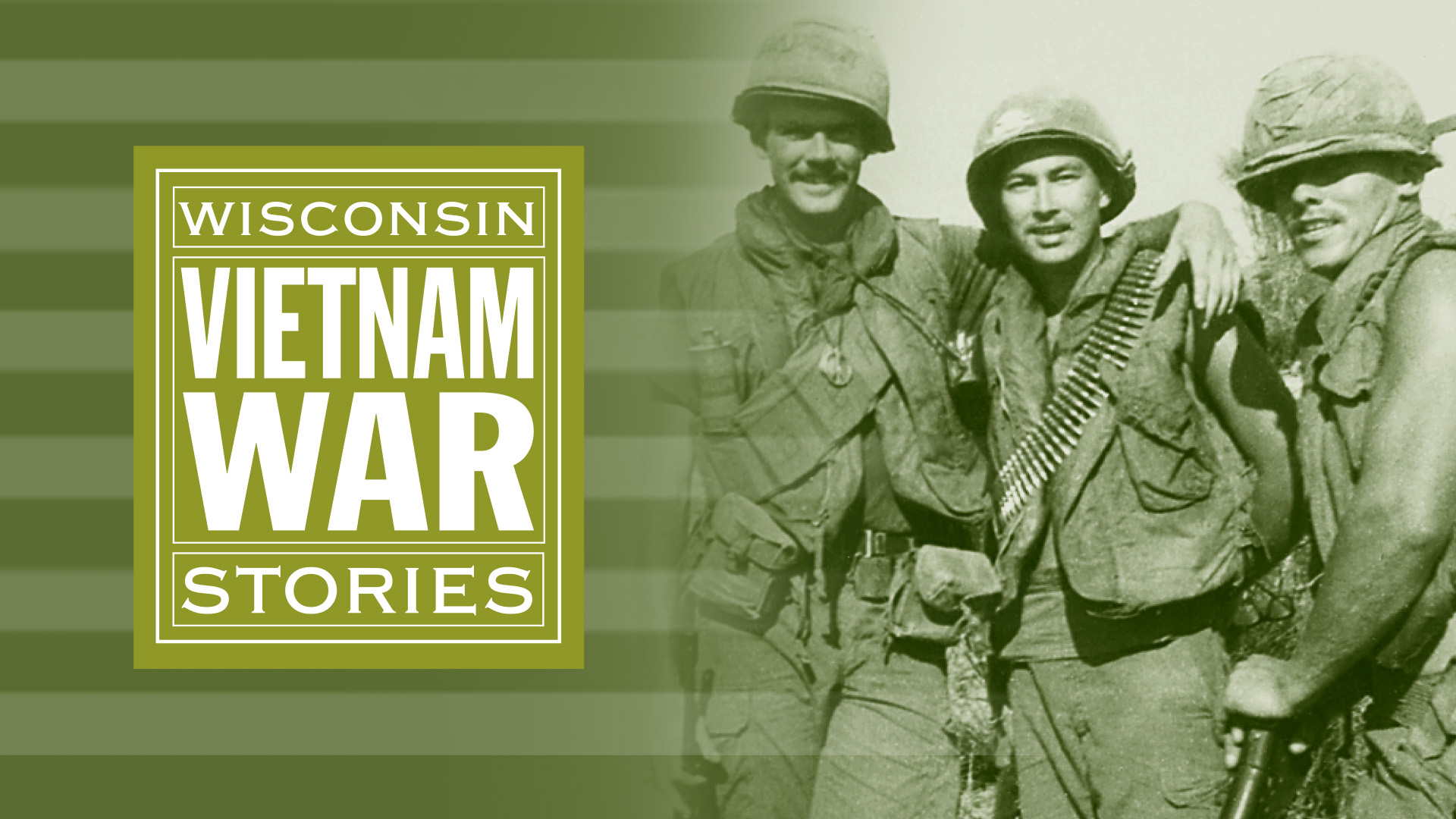






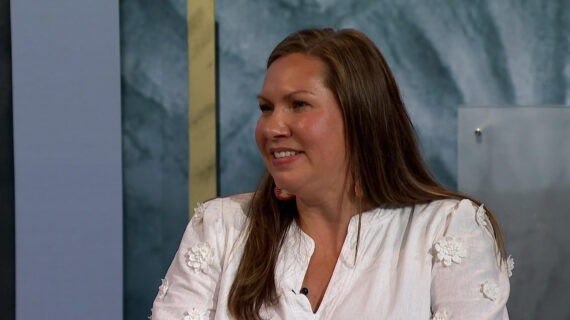
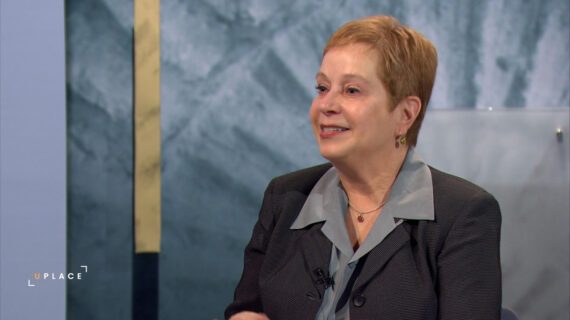
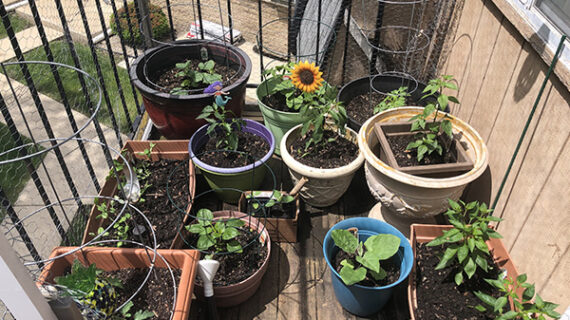
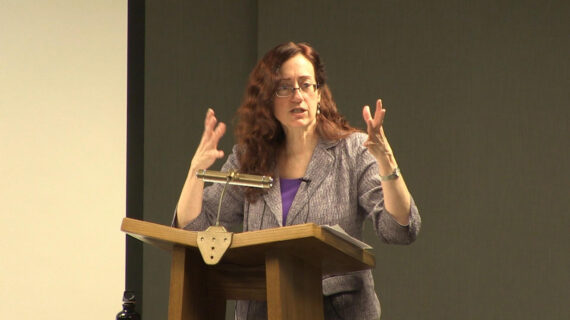
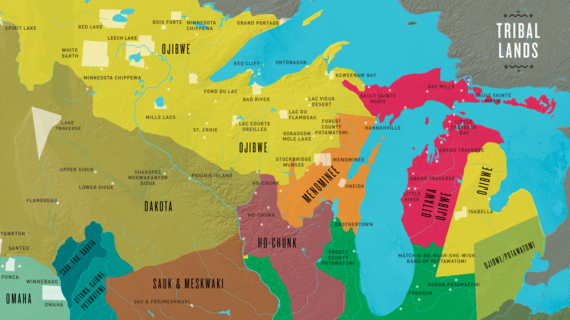
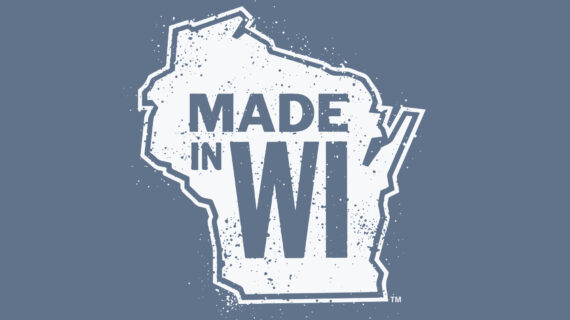

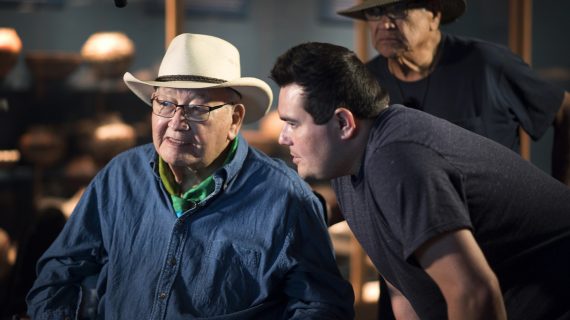


Follow Us